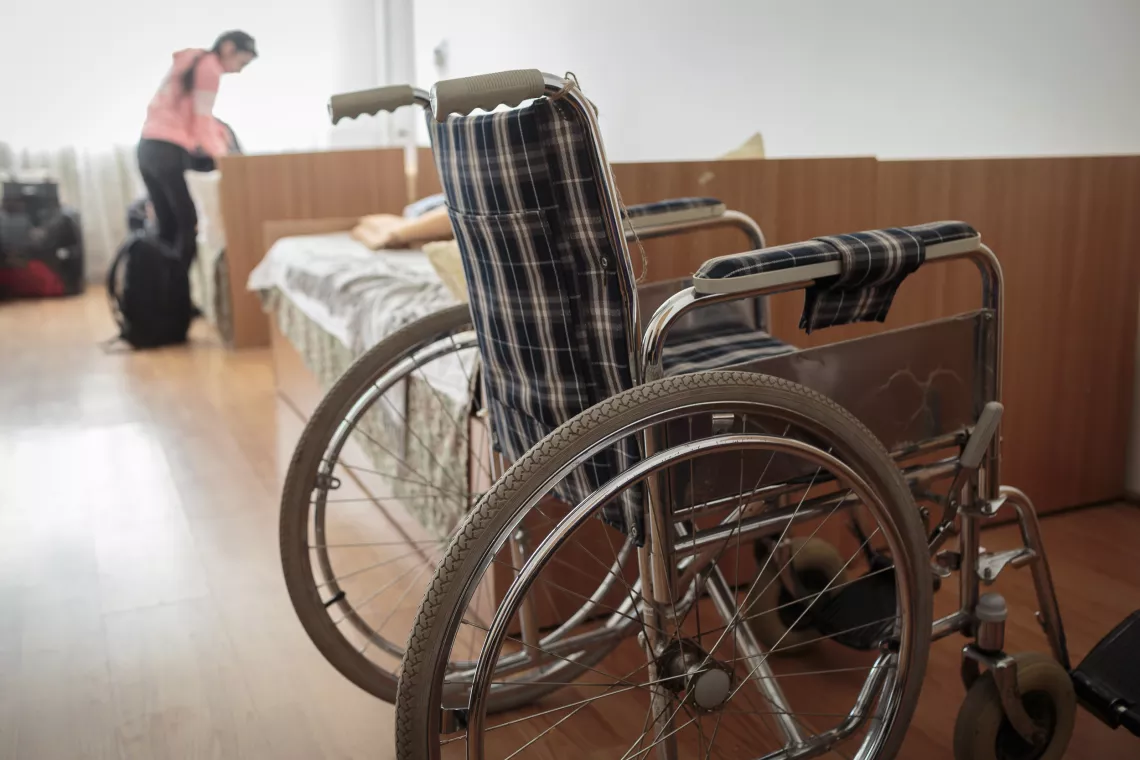The war in Ukraine has had a devastating impact on families and the well-being of all children. Children have been forced to flee their homes, separated from their parents and exposed directly to the war – terrified by the blaring sirens of bomb blasts and missile warning systems. But as in other emergencies, children with disabilities are particularly vulnerable and affected by exposure to violence, displacement and prolonged stress.
Before the war, Ukraine had the highest number of institutionally cared for children in Europe, with over 90,000 children living in residential care institutions, including orphanages, boarding schools and other care homes, almost half of whom were children with disabilities.
Since the war began, tens of thousands of children have been returned from boarding schools to their families, many in a hurry and without the care and protection they need. Thousands more remain in institutions, have been moved around Ukraine, or have been evacuated to neighboring countries. Safely transporting children with disabilities has proven difficult and in some cases impossible, leaving some children with disabilities behind while institutional caregivers and staff look after the needs and safety of their families. International aid groups have documented these cases, further demonstrating how institutional care, particularly for children with disabilities, fails to fulfil their fundamental rights.
Unfortunately, however, this is not a new phenomenon. In humanitarian situations, children with disabilities often remain invisible in needs assessments and responses – not only in terms of care and protection, but also access to education, health, social services and other supports. This is in part due to stigma and safety concerns, which can lead to families with disabilities being marginalized and excluded from humanitarian responses and attention. When the war began in Ukraine, many children with disabilities were not included in evacuation plans and lacked access to shelter, basic services, medicines and food.
Meanwhile, as in other emergencies, it is important that children with disabilities are prioritized in the planning and provision of social security, health and education, and that their specific needs regarding accessibility and additional support are addressed.
The main challenges identified by UNICEF are:
protection
Children with disabilities, especially girls, are much more likely to experience violence, abuse and neglect than their non-disabled counterparts, and these risks are compounded in the current war, as many children with disabilities are cut off from their usual support networks.
Children with disabilities face greater challenges finding safety due to lack of transport and shelter, and are at higher risk of becoming civilian casualties. They may also face barriers to accessing life-saving information, such as evacuation, humanitarian assistance and warning signals such as air raid alerts.
Children with disabilities currently in institutions suffer from poor living conditions, overcrowding in institutions, inadequate care due to a lack of staff, and a lack of essential medicines, food and hygiene products. Children with severe disabilities who need assistance are particularly vulnerable and do not receive the individual attention and support they require.
Internally displaced persons
About two-thirds of Ukraine’s children have been displaced since the war began as people continue to be forced to flee their homes, and about one in five internally displaced people in Ukraine has developmental delays or disabilities.
Internally displaced adults and children with disabilities have been cut off from support networks and services, while newly established shelters and camps have limited accessible and comprehensive services.
Children from orphanages in eastern Ukraine are being transferred to other facilities in the western part of the country, often without any documentation or tracking.
Evacuation
Families with members with disabilities often find it difficult to evacuate on their own due to limited access to evacuation information, limited roads and transport options, and a lack of assistive devices.
In addition, transporting children with disabilities who have high needs can pose special risks to the child’s health and well-being and involves additional costs.
refugees
Families with children with disabilities are at higher risk of being separated as a result of relocation or evacuation.
National systems in refugee-hosting countries are overburdened, affecting the availability and quality of specialised services for refugees with disabilities and limiting their opportunities to participate in school and other activities.

